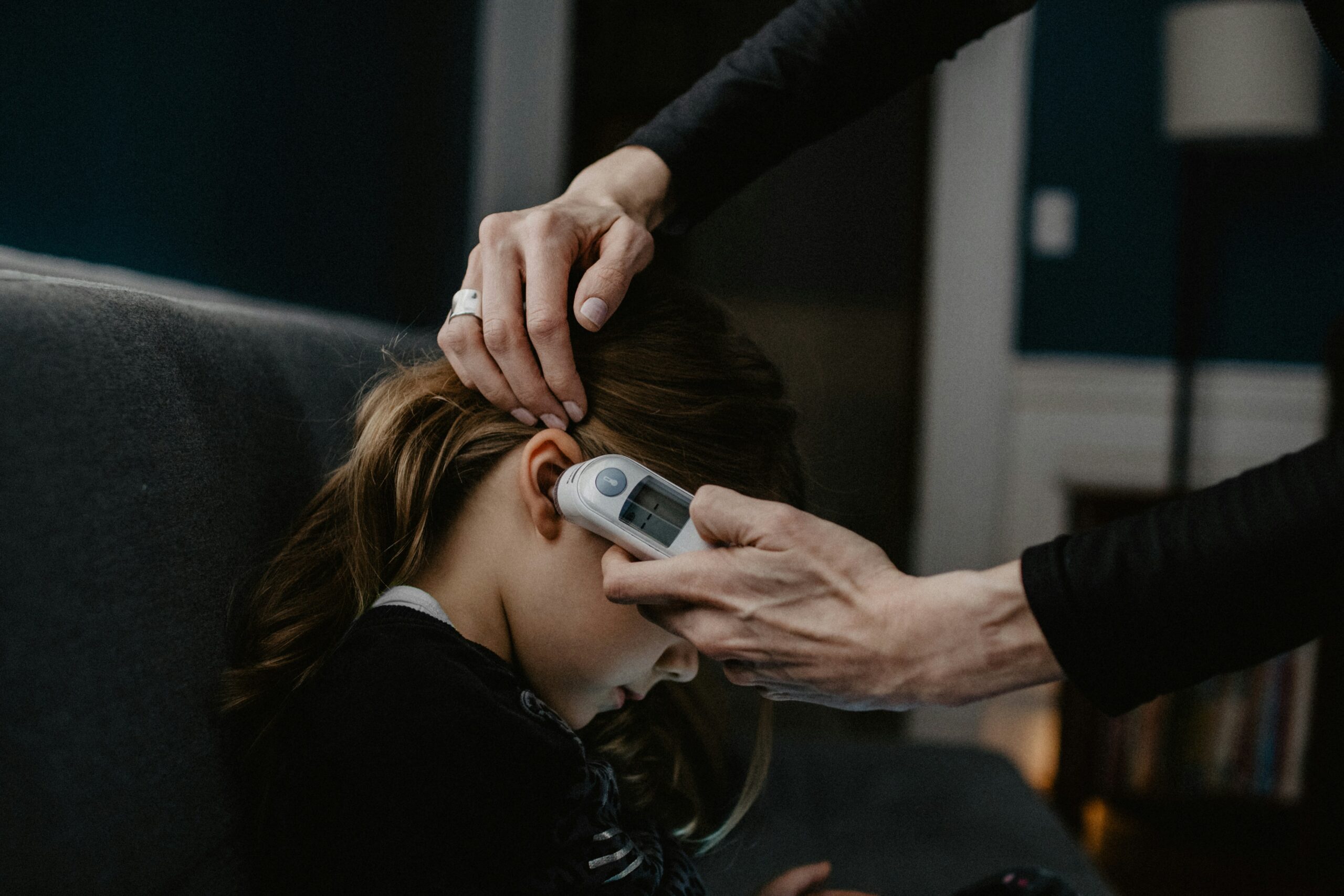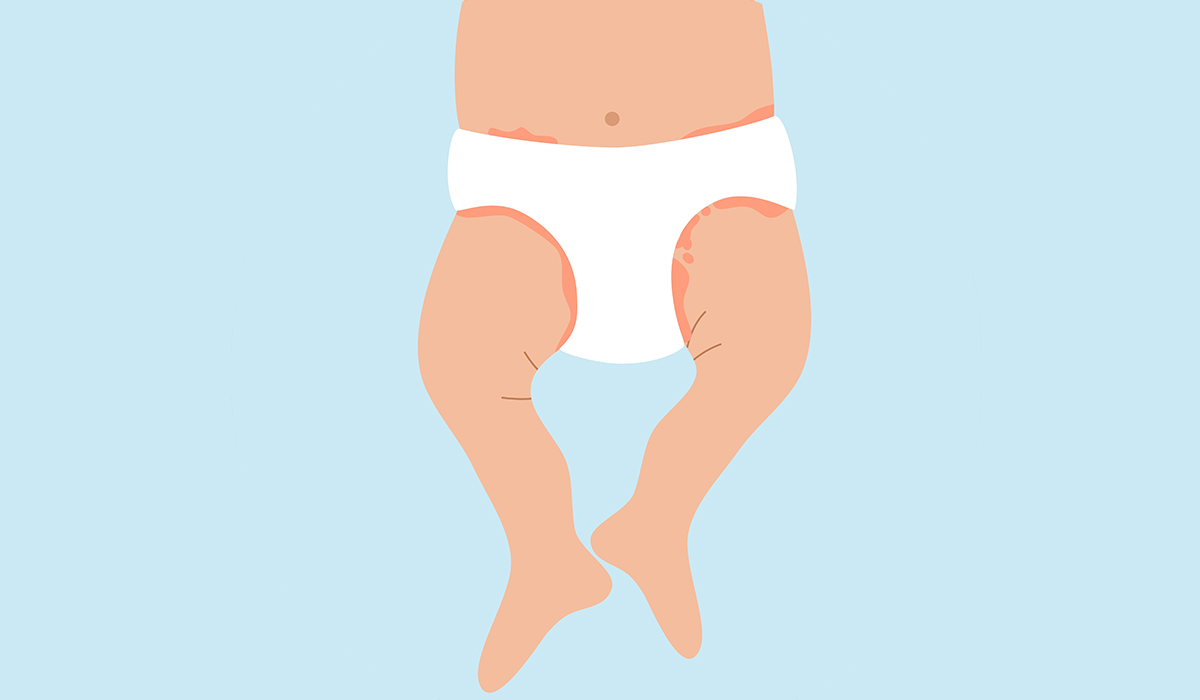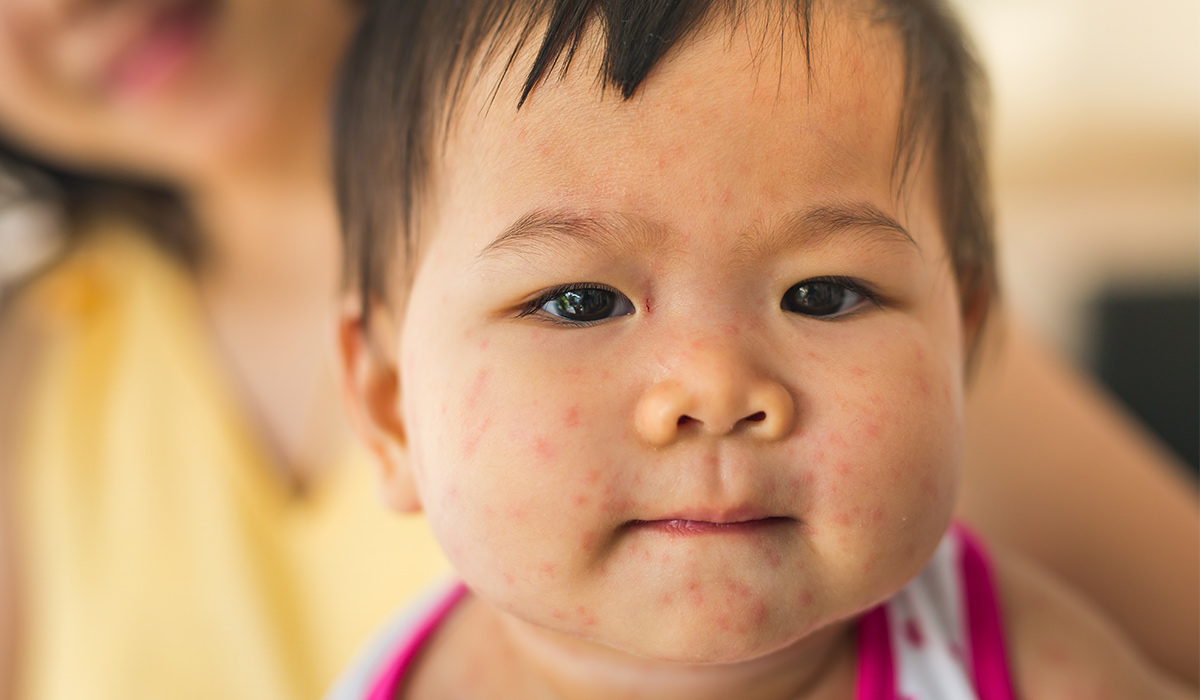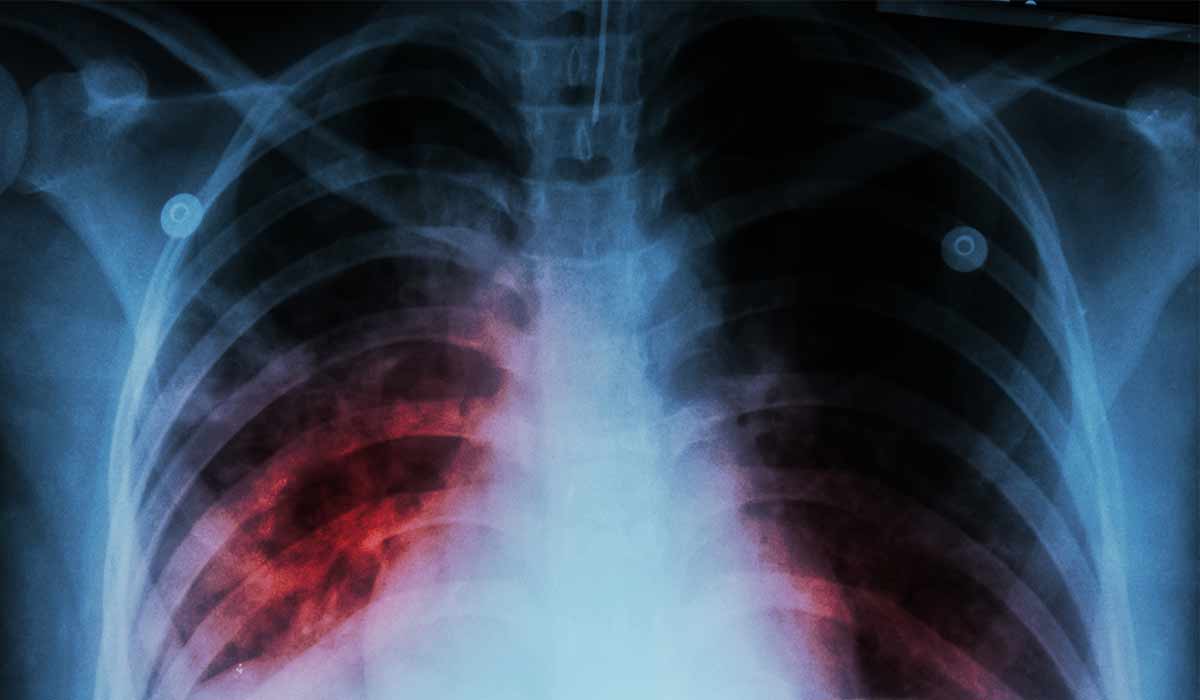Rubella is a viral infectious disease belonging to the childhood disease group. Nowadays, the disease is rare due to prevention. Rubella occurs worldwide; the peak incidence is at preschool or early school age.
However, there are also cases of rubella in adults who did not experience the disease in childhood. The onset of the disease is caused by an RNA-rubivirus from the togavirus family. rubella can be transmitted in various ways, most commonly by the droplet route. A hazardous form of rubella is congenital rubella.

Often, rubella is asymptomatic, but it can also cause symptoms such as a characteristic rash. The symptomatic disease usually lasts a few days and does not cause serious complications. Serological tests typically do not need to confirm rubella unless a pregnant woman is affected. Rubella is extremely dangerous for women in early pregnancy—Rubella treatment consists of relieving symptoms of the disease and rest. Rubella is usually mild, even in immunocompromised patients. Rubella is a disease that generally runs mildly and without complications, but contracting the disease in pregnant women can lead to severe complications in the fetus and newborn.
Rubella, by another name, is German measles![]() , described as a mild infection. The disease is most common in children and young adults who are not immunized against the rubella virus. Rubella used to affect a large group of children aged 5 to 9
, described as a mild infection. The disease is most common in children and young adults who are not immunized against the rubella virus. Rubella used to affect a large group of children aged 5 to 9![]() , and epidemics often occurred. It is also a seasonal disease that most often occurs between winter and spring. However, after introducing the possibility of vaccination
, and epidemics often occurred. It is also a seasonal disease that most often occurs between winter and spring. However, after introducing the possibility of vaccination![]() , the rate of disease decreased significantly. People who are under-vaccinated or unvaccinated are mainly at higher risk of rubella. Also, travel to endemic areas can expose one to infection.
, the rate of disease decreased significantly. People who are under-vaccinated or unvaccinated are mainly at higher risk of rubella. Also, travel to endemic areas can expose one to infection.
Rubella is an infectious condition caused by an RNA virus from the Matonaviridae![]() family. It is worth mentioning that the Rubella virus is sensitive to high temperatures, ultraviolet light, and extreme pH. Rubella can only be contracted when the rubella virus enters the body. The rubella virus enters through the upper respiratory tract but can also transmit and cause disease by other means. The modes of transmission of the rubella virus include:
family. It is worth mentioning that the Rubella virus is sensitive to high temperatures, ultraviolet light, and extreme pH. Rubella can only be contracted when the rubella virus enters the body. The rubella virus enters through the upper respiratory tract but can also transmit and cause disease by other means. The modes of transmission of the rubella virus include:

Most often, the rubella virus enters the body through the respiratory tract. Therefore, being near a person with rubella can transmit the virus to another person. After entering the respiratory tract, the virus replicates in the cells of the nasopharynx. It then spreads further, leading to a phase of viremia![]() . Viremia involves the spread of the pathogen to multiple organs via the blood. In addition, it is possible to become infected through contact with the nasopharyngeal cavity secretions of a person with the disease and their urine, blood, or feces. Infection usually occurs directly and very rarely through objects infected with the virus. Only humans contract rubella, so you can't get the pathogen from animals.
. Viremia involves the spread of the pathogen to multiple organs via the blood. In addition, it is possible to become infected through contact with the nasopharyngeal cavity secretions of a person with the disease and their urine, blood, or feces. Infection usually occurs directly and very rarely through objects infected with the virus. Only humans contract rubella, so you can't get the pathogen from animals.
Another way is the placental route. Pregnant women with rubella can infect the fetus. In pregnant women who have not previously contracted rubella, the virus can pass through the placenta and damage the fetus. Its effects are more severe on the fetus the earlier the infection occurs. Rubella is dangerous for the fetus. Rubella virus infection in the first trimester![]() can develop congenital rubella syndrome later in the baby. Congenital rubella syndrome occurs only through infection of the fetus. Procer viremia in the mother's body can lead to transmission of the virus to the fetus. Later in pregnancy, the risk of fetal defects and congenital rubella decreases.
can develop congenital rubella syndrome later in the baby. Congenital rubella syndrome occurs only through infection of the fetus. Procer viremia in the mother's body can lead to transmission of the virus to the fetus. Later in pregnancy, the risk of fetal defects and congenital rubella decreases.

Rubella is described as a mild infection lasting two to three weeks. There may be systemic symptoms in adults at the beginning of the disease. In young children, rubella infection may be asymptomatic![]() . In the neonatal period, rubella is dangerous and can lead to numerous complications. Symptoms of rubella include:
. In the neonatal period, rubella is dangerous and can lead to numerous complications. Symptoms of rubella include:
Systemic symptoms of rubella mainly include sub-febrile states, fever, and weakness. Patients may also experience headaches and malaise, and muscle aches may also occur. These are typical symptoms that indicate the body is fighting an infection. In the fight against viruses, the immune system plays an important role. The immune system takes proteins from the muscles to fight viruses with its help, making us feel pain and fatigue.
Enlarged lymph nodes are a process of adenopathy![]() or inflammation involving the lymph nodes. In the course of rubella, lymph nodes are often enlarged. They are an integral part of the immune system, whose function is to filter lymph from microorganisms and mature and store lymphocytes. The disease commonly affects the anterior cervical, suboccipital, and retroauricular lymph nodes. The lymph nodes may be tender and painful. They become hard to the touch, which is easy to notice as they often take on a larger size.
or inflammation involving the lymph nodes. In the course of rubella, lymph nodes are often enlarged. They are an integral part of the immune system, whose function is to filter lymph from microorganisms and mature and store lymphocytes. The disease commonly affects the anterior cervical, suboccipital, and retroauricular lymph nodes. The lymph nodes may be tender and painful. They become hard to the touch, which is easy to notice as they often take on a larger size.
Rubella can be associated with pharyngitis, a condition caused by the rubella virus that causes inflammation localized to the mouth and throat mucous membranes. Pharyngitis results in swelling, redness, and pain in the throat. Patients may have difficulty eating food due to painful symptoms. In most cases, throat inflammation is harmless and resolves on its own.

In addition to pharyngitis, the rubella virus can also attack the organ of vision, causing conjunctivitis. Conjunctivitis is a common eye disease. During this condition, an inflammatory process develops within the conjunctiva, which protects the eye. Symptoms that occur during inflammation are burning, redness, watering of the eyes, the presence of secretions, and pinching of the eyelids. Upon awakening, there is a feeling of sticky eyelids. There is also photophobia or hypersensitivity to light. With the cure of rubella, the conjunctivitis should resolve on its own.
A rash is usually the first sign of rubella in children. Rubella rash appears as pink spots with papules. The island lesions often start on the face and may spread to the trunk and other body parts. The rash can be pinkish-red or purple. Sometimes, it appears scarred. The rash symptoms usually last about three days, after which they disappear. The rash is blotchy or fine-dotted and usually leaves no irritation. Another skin manifestation of rubella is Forchheimer's spots![]() , or petechiae, on the soft palate, but they are relatively rare. In some people, the course of the infection may be rash.
, or petechiae, on the soft palate, but they are relatively rare. In some people, the course of the infection may be rash.
The rash is sometimes accompanied by itching of the skin. This is especially troublesome in children, as the itching can cause children to scratch themselves, spreading the lesions to other body parts. Through scratching, skin peeling sometimes occurs. Usually, however, rubella does not cause itching or peeling of the skin.

The differential diagnosis of rubella includes diseases with a similar course. In particular, the rash's appearance and characteristics are considered. The diagnosis is made in most cases based on a thorough history and typical clinical picture. However, diagnosing rubella can be difficult when symptoms are too mild and nonspecific. In such cases, serological tests are performed.

Serology is immunology, which is concerned with antigen-antibody responses in the blood serum. Antigens are molecules recognized by antibodies produced by the immune system. They can be viruses, bacteria, and allergens. Serological tests can identify unknown antigens. Serological tests performed in the diagnosis of rubella involve the detection of rubella-specific antibodies. Rubella antibodies are detectable about four days after the onset of the rash symptom.
When pregnant women contract rubella, testing should be done as soon as possible. Serological tests in such cases can confirm whether primary rubella infection has occurred. The congenital type of the disease can also be diagnosed by drawing fetal blood or detecting the virus in amniotic fluid.
The essence of the differential diagnosis process is to assess the likelihood that an observed symptom may indicate a condition other than rubella. The course of rubella may be similar to other infections and diseases, especially with a rash. Such diseases include:

Measles is a rash disease of the respiratory system. The measles virus is a highly contagious pathogen and spreads rapidly. Measles is transmitted by the droplet route and through contact with infectious secretions. The virus initially multiplies in the surrounding lymph nodes, so enlarged lymph nodes can resemble rubella. Another similar symptom is a rash. The measles rash starts at the hairline and behind the ears and spreads down the trunk and limbs. The measles rash is initially coarse-spotted, merging into vivid red patches with small irregularly shaped papules.
HHV-6 and HHV-7 are among the currently known human viruses of the genus Herpes. Herpesvirus infection most often occurs through direct contact with saliva and the sexual route, and less often indirectly. Herpes viruses can cause maternal-fetal infections. Most infections caused by HHV-6 and HHV-7 are asymptomatic. Symptoms usually take the form of an uncharacteristic febrile illness. Herpesvirus infections can also lead to clinical manifestations such as skin rash and pneumonia, resembling the course of rubella.
Infectious mononucleosis is a syndrome of disease symptoms occurring during Epstein-Barr virus infection. The EBV virus is transmitted from person to person by the droplet route. The clinical picture of the mononucleosis disease depends on the age at which the infection occurred. Infectious mononucleosis is an acute contagious disease. Initially, the infected person experiences muscle aches, headaches, and weakness. There is also fever and enlarged lymph nodes, which means mononucleosis can be confused with rubella. An essential symptom in the differential diagnosis is the rash, which in infectious mononucleosis is maculopapular and papular and slightly protruding above the skin surface.
Cytomegalovirus is a disease that results from infection with the CMV cytomegalovirus, and the infection spreads quickly through direct contact with saliva, urine, or sexual contact with a sick person or carrier. The disease is asymptomatic in most people, especially cytomegalovirus in adults. In other cases, symptoms may resemble mononucleosis and, for that matter, rubella. Among other things, there is a fever and enlarged lymph nodes. CMV is particularly dangerous for fetuses, as it can lead to miscarriage. Therefore, it is essential for pregnant women who notice symptoms of infection to see a doctor.

Scarlet fever is an infectious condition caused by bacteria—strains of Streptococcus pyogenes cause the infection. The disease used to be associated with a high mortality rate, but today, thanks to medical advances and improved sanitation, it is rarely fatal. It is an upper respiratory disease with a rash, the course of which may resemble rubella. The disease begins suddenly, and symptoms include fever, enlarged lymph nodes, and sore throat. In addition, there may be a rash of small red spots that cluster in the knee and elbow joints and on the trunk. The rash persists for up to several days.
Mycoplasma is an atypical bacterium that causes disease in humans. The pathogen mainly attacks the respiratory tract in adults and children. The droplet route transmits the disease. Mycoplasma pneumonia can cause inflammation in the upper and lower respiratory tract. Most often, it is mild and resolves spontaneously. Symptoms are not characteristic. They are easily attributed to other diseases. There may be erythema or urticaria, which resembles a rubella rash. That is why testing the level of IgG antibodies specific for Mycoplasma pneumoniae antigens is such a useful diagnostic tool.
Rubella-like courses can also have non-infectious causes. Such include Kawasaki disease, which is an acute systemic disease of childhood. As for the etiology, the causes of Kawasaki disease are not fully known. The typical symptom of the disease is a high and hard-to-control fever. Typical lesions on the extremities include erythema, swelling of the palms and soles of the feet, or flaky peeling of the epidermis on the fingers and toes. A multiform, uncharacteristic rash appears on the body. It may resemble the rash found in measles or rubella. Kawasaki disease is completely curable in most patients. However, complications of the disease can be dangerous.
Contact dermatitis is marked by skin changes after contact with allergens or irritants. Children's delicate skin is particularly susceptible to environmental factors, which can disrupt its function and lead to contact dermatitis.
In the case of allergies, inflammation involving the skin surface usually subsides without leaving permanent damage. The appearance of the rash, however, may resemble the mild course of rubella. Allergic contact dermatitis can take an acute or chronic form. Symptoms are localized at the site of direct skin contact with the sensitizing hapten or around the lymph nodes. The lesions are erythematous and can show a wide variety in the clinical picture, but the characteristic feature is severe pruritus.

The treatment of acquired rubella in nonpregnant people is manageable and completely curable. Such people are treated mainly symptomatically with non-steroidal anti-inflammatory drugs![]() . Treatment is designed to support fighting the virus and lower the intensity of symptoms such as fever, joint pain, and others. In contrast, the treatment process can be more complicated in pregnant women.
. Treatment is designed to support fighting the virus and lower the intensity of symptoms such as fever, joint pain, and others. In contrast, the treatment process can be more complicated in pregnant women.
The essence of treating rubella in a pregnant woman at risk may even be to terminate the pregnancy. However, severe such management requires consideration of the problem and mainly applies to the period before 18 weeks of pregnancy. If the infection occurs later in pregnancy, the pregnancy can be continued with ultrasound monitoring and special care. Pregnant women with contact with a rubella patient can be given gamma-globulin![]() to prevent infection.
to prevent infection.
Infection of the child due to the mother's illness can result in the child's congenital rubella syndrome, which consists of abnormalities of the vision, hearing, and heart. In congenital rubella syndrome, children should be under constant medical care. Treatment of congenital rubella focuses on relieving symptoms and preventing complications. Complications, such as congenital malformations, require treatment that depends on the specific problems and may include surgical interventions, drug treatment, or rehabilitation therapies.

Acquired rubella usually does not cause complications. It is a mild infection that resolves on its own, and the rash lesions do not cause scarring or irritation. Sometimes, arthritis![]() , conjunctivitis
, conjunctivitis![]() , or encephalitis
, or encephalitis![]() can occur as a complication. However, these complications in acquired rubella are infrequent.
can occur as a complication. However, these complications in acquired rubella are infrequent.
In congenital rubella![]() , complications can be numerous. Congenital rubella is a severe disease that results from a pregnant woman becoming infected with the rubella virus. It can cause severe congenital disabilities in the child. Immediately after birth, the child may develop meningitis or encephalitis. Later in the child's life, there is an increased risk of insulin-dependent diabetes, thyroid disorders, neurological disorders, or vision problems. Various organ defects and even premature death of the child may occur. That's why it's so important to seek treatment quickly if rubella is suspected in a pregnant woman.
, complications can be numerous. Congenital rubella is a severe disease that results from a pregnant woman becoming infected with the rubella virus. It can cause severe congenital disabilities in the child. Immediately after birth, the child may develop meningitis or encephalitis. Later in the child's life, there is an increased risk of insulin-dependent diabetes, thyroid disorders, neurological disorders, or vision problems. Various organ defects and even premature death of the child may occur. That's why it's so important to seek treatment quickly if rubella is suspected in a pregnant woman.
Rubella is an infectious condition caused by an RNA virus transmitted directly through the droplet route during close contact with an infected person or through the placental route. Susceptibility to infection is common. Rubella is most common in preschool and school-age children. But it can also affect adults.
Many infections are mild. The onset of the disease in rubella is preceded by a period accompanied by fever, weakness, and enlarged lymph nodes. This is followed by more characteristic symptoms such as a rash. The rash is fine-spotted or maculopapular and appears first on the face and neck and later all over the body. At first, it forms a fading macular erythema; later, it is similar to a florid rash. Diagnosis is made based on a carefully taken history and after examining the patient.
In some cases, serological tests are necessary to confirm rubella. Treatment depends on the type of rubella and the patient's general condition. Mild cases of rubella are usually treated with anti-inflammatory drugs to relieve symptoms.
In contrast, pregnant women and children with congenital rubella require specialized care. Congenital rubella syndrome is a hazardous case of rubella that occurs in children infected through the fetal route during pregnancy. This disease is associated with numerous congenital disabilities and complications.
Table of Contents

Swollen lymph nodes often occurs as a result of upper respiratory tract infections or infectious diseases. What are the symptoms?… read more »

Epstein Barr Virus is a pathogen that causes infectious mononucleosis and many other diseases. Learn about the risks associated with… read more »

Diaper rash is when little kids and babies sometimes get a rash from wearing nappies if their skin is wet… read more »

The human lymphatic system is an important support for the immune, circulatory and even digestive systems. What are its functions?… read more »

Do you know what the mononucleosis symptoms are? Find out how to recognize EBV infection. Learn about treatment methods and… read more »

Lymphoma is a cancer of the lymphatic system. It is formed from lymphocytes – white blood cells. What are the… read more »

The Ebola virus continues to pose a threat to those living in Africa. Learn about the risks associated with Ebola… read more »

Labyrinthitis is a condition that causes worrying symptoms. Find out what causes inner ear disease. Learn how to recognise alarming… read more »

Tuberculosis is an infectious disease caused by mycobacteria. There are many types of tuberculosis with varying symptoms. Learn it all… read more »